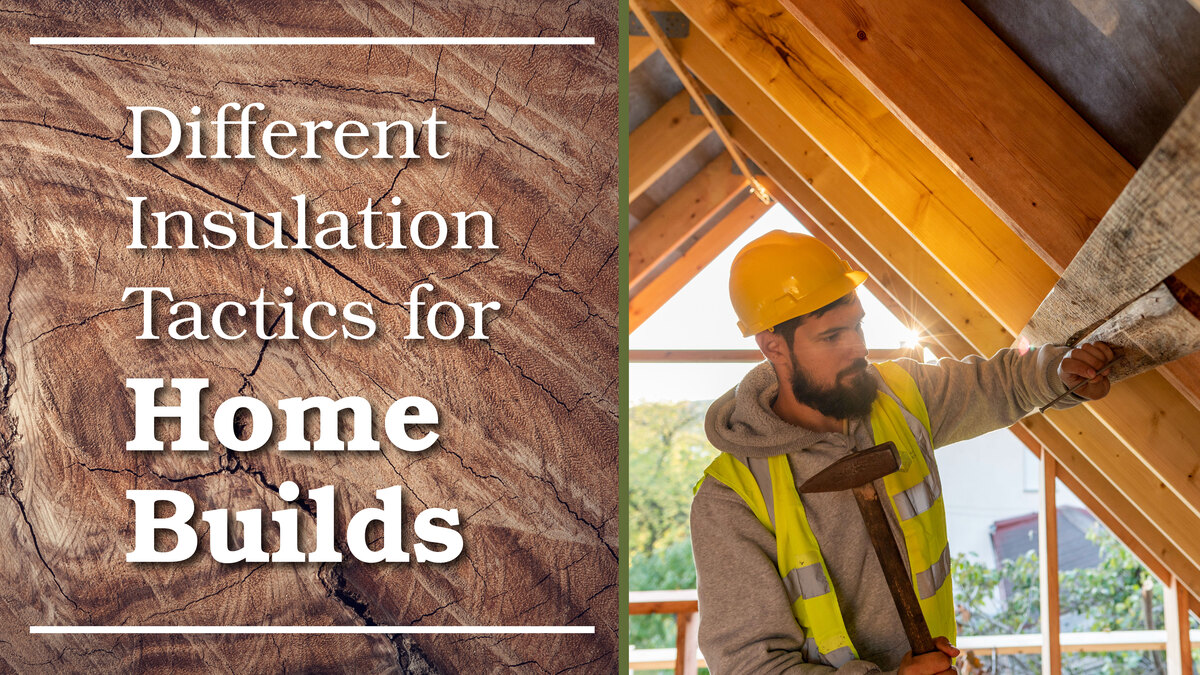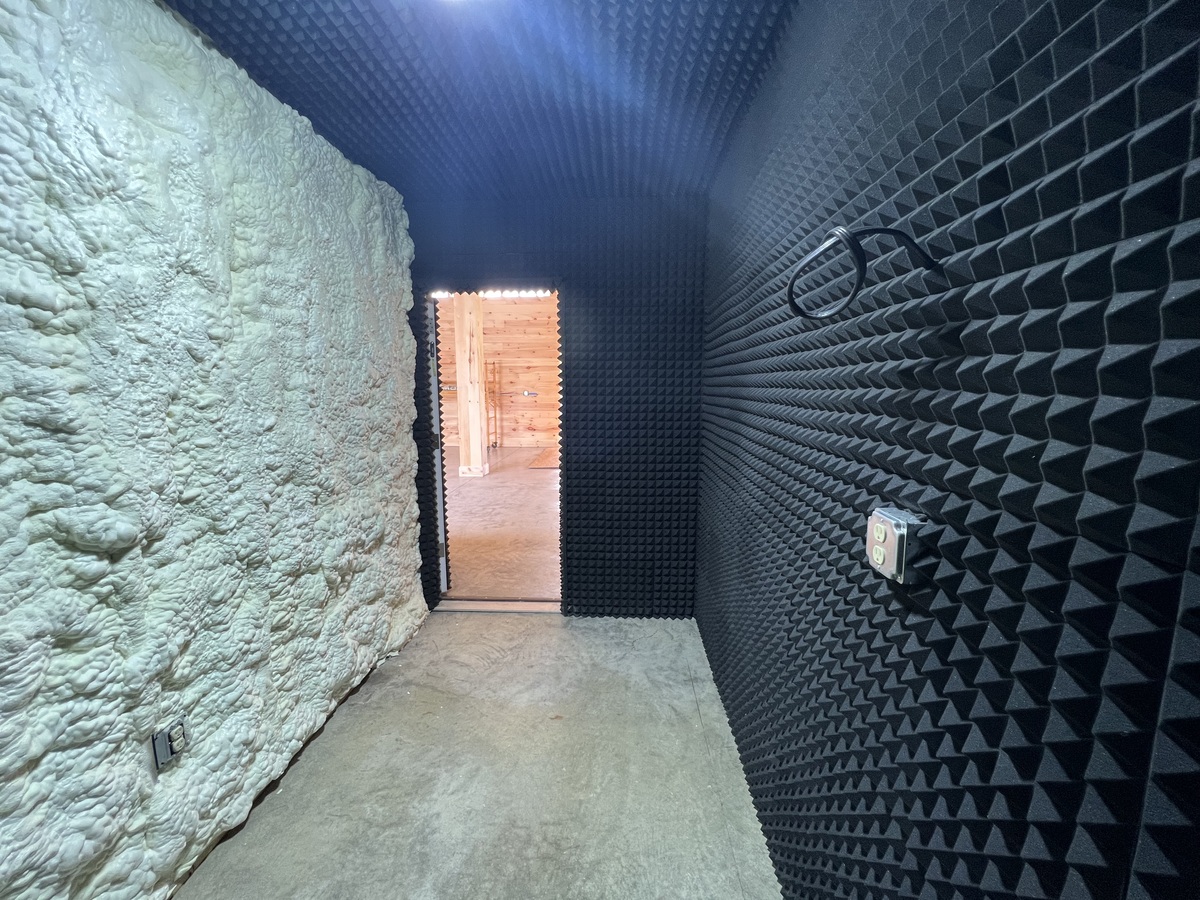Different Insulation Tactics for Home Builds

Last month we spent some time talking about little details in home renovation, those things that are so often overlooked yet so are so important when discussing the quality of a space. This discussion often centers around visuals and aesthetics. However, there are aspects that people cannot see that can and should be done before starting your home renovation.
A well-insulated room, one that keeps inside noises in and outside noises out, is essential for a homeowner's comfort. This is especially true for those whose homes are situated in particularly noisy environments or those who will be producing a lot of sound inside their space (the Old School Craftsman workshop for example).
But, insulation is not something easily replaced, especially in historic homes. This is one of the few things to consider when renovating your home, historic or not. Many building professionals know surprisingly little about insulation and prefer a one-size-fits-all approach.
Because I recently built the workshop, I had many decisions to make about the design and construction, components, etc. ONE of them was choosing the proper insulation - and I thought it would be a good idea to set aside a blog post to discuss the topic. So that's what we'll do! Keep reading, we'll discuss the importance of proper insulation, different effective insulation techniques, and how insulation maximizes energy efficiency.
The Importance of Proper Insulation
Insulation is important for many reasons, depending on the function of the given space. Different types of sounds carry differently, and different types of spaces are susceptible to cold air in different ways. Also important to remember is that insulation can only be done properly before a build's construction is complete. Adding insulation after the fact will at best be a half-measure.
Proper insulation focuses on two areas:
Energy Efficiency
Energy efficiency refers to using energy, in this case, heat energy, as conservatively as possible. Insulation plays a key role in achieving this goal. By effectively insulating a building, heat is retained during the colder months and cool air is kept in during the hotter months. As a result, the need for excessive heating and cooling is reduced, thereby saving energy.
Sound Reduction
Buildings that are properly insulated experience less sound transmission, resulting in quieter indoor environments. This is particularly beneficial in workspaces and residential buildings where a peaceful atmosphere is desired. Remember also, that insulation can keep loud noises inside your space - your neighbors will thank you!

Insulation for Walls and Ceilings
Effective insulation techniques for walls and ceilings are crucial for maintaining a comfortable, quiet, and energy-efficient environment within a building. There are several insulation materials and techniques available, each with its own advantages and suitability for different applications.
Wall Insulation
- One common technique is batt insulation. This involves installing pre-cut fiberglass or mineral wool batts between wall studs. Batt insulation provides thermal resistance and soundproofing, making it an effective choice for residential and commercial buildings. This is by far the most common insulation used today.
- Another technique is blown-in insulation, which utilizes loose-fill insulation materials blown into wall cavities. This technique ensures complete coverage and minimizes air infiltration, resulting in enhanced energy efficiency.
- Insulated sheathing is another effective wall insulation technique. It involves adding rigid foam insulation panels on exterior walls before siding installation. This technique enhances both thermal performance and moisture resistance.
- Foam insulation is another option and one of my personal favorites. We used foam insulation for our new shop, with amazing results. Just like it sounds, foam insulation is sprayed into the spaces between the walls
Ceiling Insulation
- For ceiling insulation, one commonly used technique is attic insulation. This involves installing insulation materials such as fiberglass batts, blown-in cellulose, or spray foam in the attic space. Attic insulation prevents heat transfer between the living area and the roof, ensuring optimal thermal comfort.
- Cathedral ceiling insulation is another technique used in buildings with sloped or cathedral ceilings. This technique involves employing rigid foam boards or spray foam insulation to provide adequate thermal resistance and ventilation in these specific ceiling types.
- Lastly, radiant barriers can be installed under roof rafters to reduce radiant heat transfer, particularly in hot climates. Reflective foil insulation effectively blocks the transfer of radiant heat, keeping the interior of the building cooler.
Maximizing Energy Efficiency with Insulated Windows and Doors
Insulated windows and doors play a crucial role in maximizing energy efficiency and noise absorption in buildings. One key feature that helps in achieving this is the use of thermal breaks in the frames.
Thermal breaks are essentially barriers made of materials like polyurethane or fiberglass that are incorporated within the frames of windows and doors. These breaks prevent thermal bridging, a phenomenon where heat conducts through the frame, resulting in energy loss. By introducing a thermal break, the transfer of heat is significantly reduced, thereby enhancing the overall insulation performance of the openings. This not only prevents unwanted heat loss during colder months but also inhibits heat gain during warmer months, creating a more energy-efficient environment.
Another important aspect of maximizing energy efficiency is the installation of effective weatherstripping and seals around windows and doors. These seals are essential to prevent air leakage, which is a major cause of energy loss in buildings. By ensuring proper seals are in place, air infiltration is minimized, maintaining interior comfort and reducing the workload on heating and cooling systems. This enhances the overall insulation performance of the openings, leading to reduced energy consumption and lower utility bills.
Don't Forget Insulation on Your Next Build
Insulation is the best way to reduce noise leakage, both in and out, and maximize your space's energy efficiency. However, your space must be insulated when it is being built. It is very difficult to properly insulate a space after the fact. So next time you have a space or room built, be it a new project or an add-on, make sure you think about insulation.
Remember that there are many different types of insulation out there, well beyond those big pink rolls of fiberglass you see. Each space is different and has different insulation needs. Be sure to think critically about which type of insulation is right for your space's needs, and find a contractor that is open to a discussion about your space's needs.
In the meantime, Old School Craftsman is here to help with all your small-scale, high-detail projects. Our new shop is fully equipped to handle your needs from historical restorations to upgrades for custom spaces.
Let's discuss your project needs. Click here to start a conversation with Old School Craftsman today!
Follow us on Facebook, Instagram, and Pinterest for more discussion on historical homes and updates from our most recent projects.
Happy with the difference Old School Craftsman made on your home refurbishment? Leave us a five-star review here!
